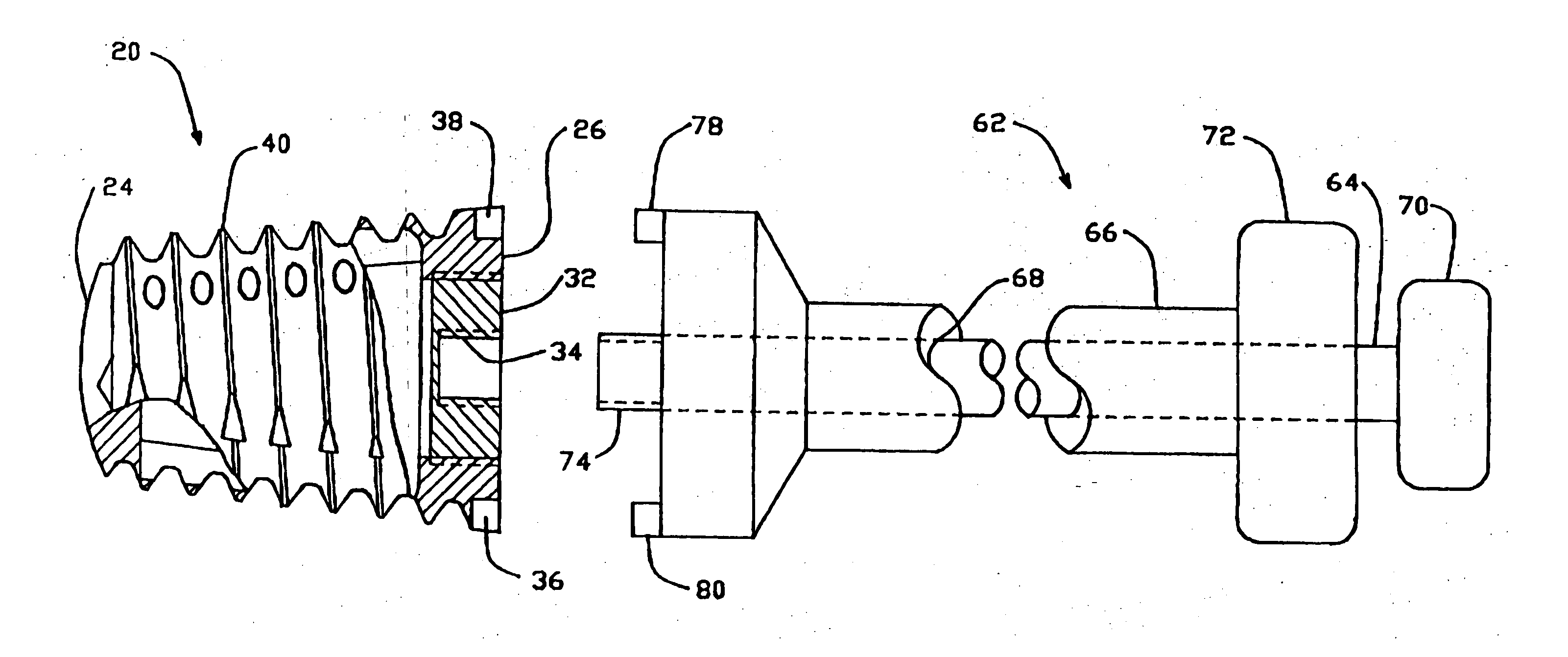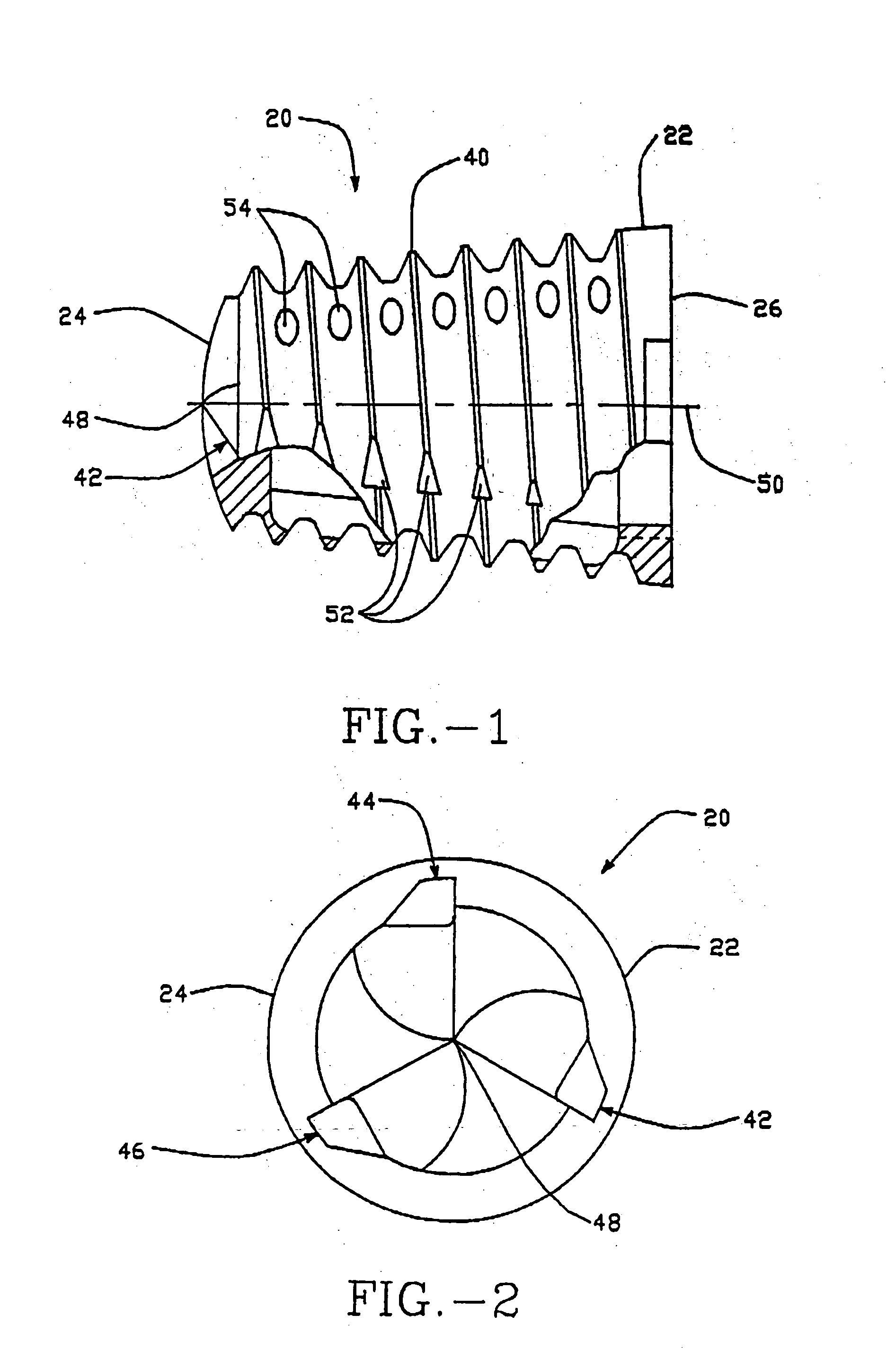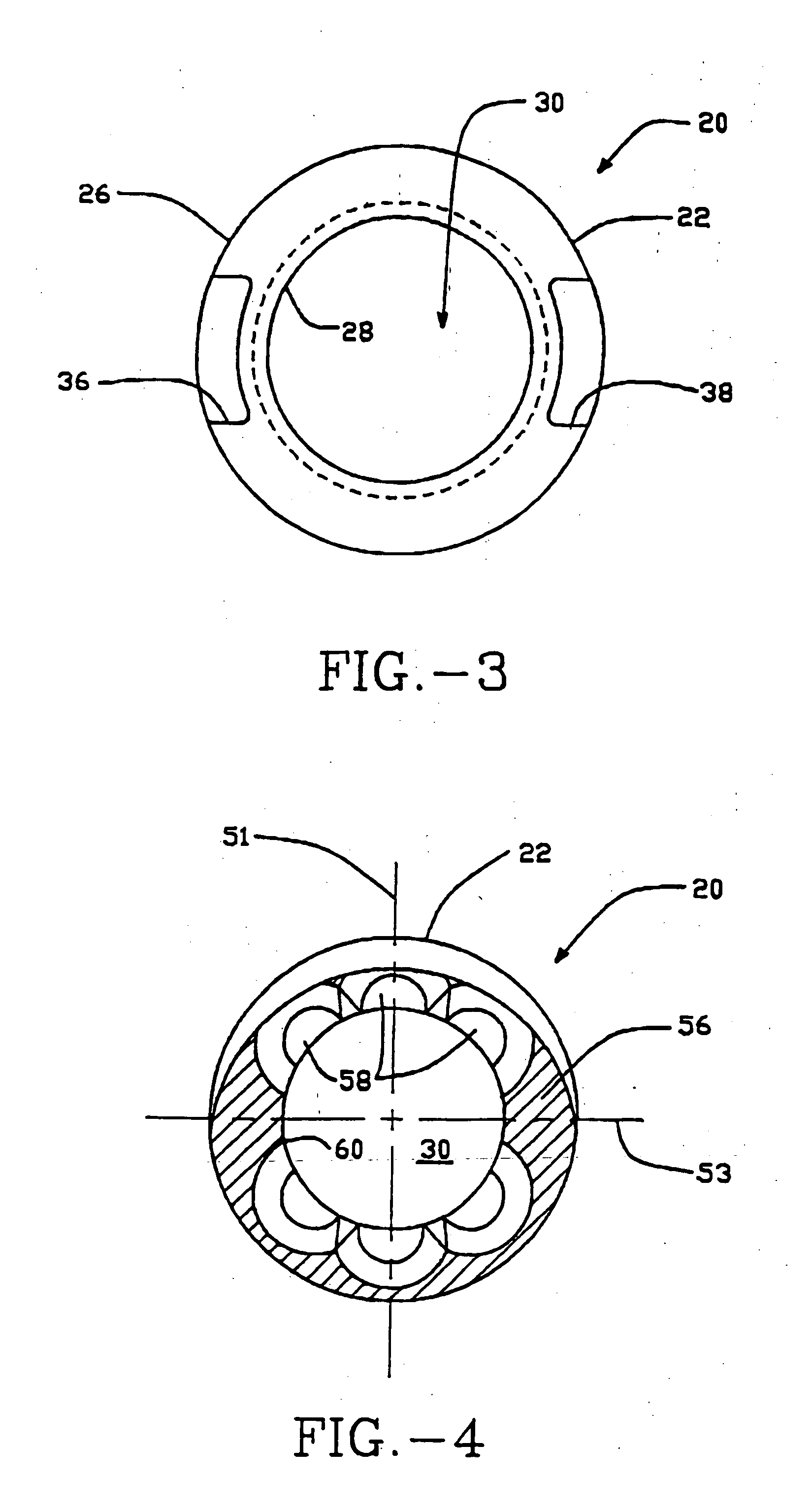Methods of inserting conically-shaped fusion cages
a fusion cage and conical shape technology, applied in the field of fusion of adjacent vertebral bodies or bone structures, can solve the problems of affecting the fusion cage self-tapping nature and the inability of the disk material to support the threads, and achieve the effect of accurately positioning and enhancing the self-tapping nature of the fusion cag
- Summary
- Abstract
- Description
- Claims
- Application Information
AI Technical Summary
Benefits of technology
Problems solved by technology
Method used
Image
Examples
Embodiment Construction
[0030] With respect to the figures in a particular FIG. 1, a side view of the preferred embodiment of the fusion cage 20 is depicted. Fusion cage 20 includes a fusion cage body 22 which in this preferred embodiment is provided in the shape of a cone. Fusion cage 20 includes a distal end 24 and a proximal end 26. The distal end 24 in a preferred embodiment is rounded or bull nosed in order to facilitate the insertion of the fusion cage 20 relative to one or more bone structures. The proximal end 26 includes an opening 28 which communicates with an internal cavity 30 defined by the fusion cage 20. The opening 28 in a preferred embodiment is threaded so that it can receive an end cap or plug 32 (FIG. 5). End cap 32 is used to close off the proximal end 26 and retain bone growth inducing substances packed therein as described hereinbelow. As can be seen in FIG. 5, end cap 32 includes a threaded bore 34 which is designed to receive an insertion tool. The threaded bore 34 has an initial u...
PUM
 Login to View More
Login to View More Abstract
Description
Claims
Application Information
 Login to View More
Login to View More - R&D Engineer
- R&D Manager
- IP Professional
- Industry Leading Data Capabilities
- Powerful AI technology
- Patent DNA Extraction
Browse by: Latest US Patents, China's latest patents, Technical Efficacy Thesaurus, Application Domain, Technology Topic, Popular Technical Reports.
© 2024 PatSnap. All rights reserved.Legal|Privacy policy|Modern Slavery Act Transparency Statement|Sitemap|About US| Contact US: help@patsnap.com










